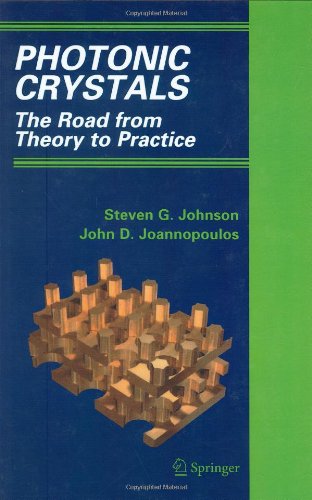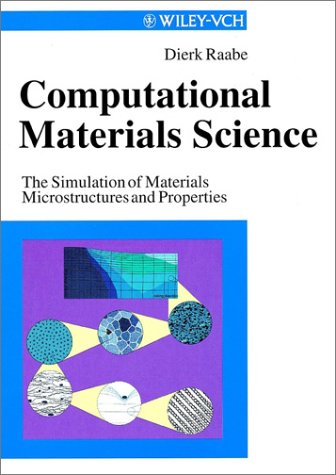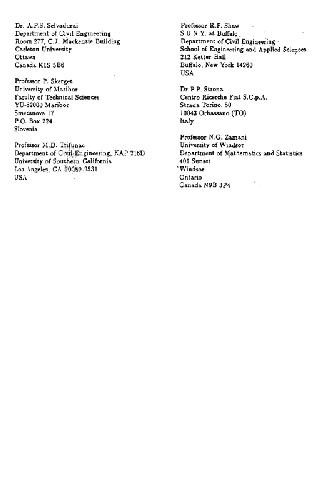Labeyrie A., Lipson S.G., Nisenson P.978-0-511-22487-4, 0-511-22487-7, 978-0-521-82872-7, 0-521-82872-4, 0-521-53565-4
Table of contents :
Cover……Page 1
Half-title……Page 3
Title……Page 5
Copyright……Page 6
Contents……Page 7
Illustrations……Page 14
Preface……Page 30
Peter Nisenson, 1941–2004……Page 33
1.1 Historical introduction……Page 37
References……Page 43
2.1.1 Young’s experiment (1801–3)……Page 45
2.1.2 Using Young’s slits to measure the size of a light source……Page 47
2.2 Some basic wave concepts……Page 49
2.2.2 Huygens’ principle: propagation of limited or distorted waves, and gravitational lensing……Page 51
2.2.3 Superposition……Page 53
2.3 Electromagnetic waves and photons……Page 55
References……Page 58
3.1 Interference and diffraction……Page 59
3.1.1 Interference and interferometers……Page 60
3.1.2 Diffraction using the scalar wave approximation……Page 64
Young’s slits……Page 67
A square aperture……Page 68
An array of apertures……Page 69
3.1.4 The point spread function……Page 73
3.1.5 The optical transfer function……Page 75
3.2.1 The effect of uncertainties in the frequency and wave vector……Page 76
3.2.3 Partial coherence……Page 77
3.2.4 Spatial coherence……Page 78
3.2.5 Temporal coherence……Page 79
3.3 A quantitative discussion of coherence……Page 80
3.3.2 The relationship between the coherence function and fringe visibility……Page 81
3.3.3 Van Cittert–Zernike theorem……Page 82
A circular star with angular diameter Alpha……Page 85
A circular star with a monotonic decrease of intensity with radius……Page 86
A binary pair of disk-like stars……Page 87
3.4.1 A statistical model for quasimonochromatic light……Page 88
3.4.2 Intensity correlation – the second-order coherence function……Page 91
3.4.3 Photon noise……Page 92
3.4.4 Photodetectors……Page 94
References……Page 98
4.1.1 The optics of aperture synthesis……Page 100
4.1.2 Sampling the (u, v) plane……Page 102
4.1.3 The optimal geometry of multiple telescope arrangements……Page 105
4.2 From data to image: the phase problem……Page 107
4.2.1 What can be done to measure phases? Phase closure……Page 109
4.3 Image restoration and the crowding limitation……Page 111
4.3.1 Algorithmic image restoration methods……Page 112
4.3.2 The crowding limitation……Page 113
4.4.1 Wave mixing and heterodyne recording……Page 114
4.5 A quantum interpretation of aperture synthesis……Page 117
4.6 A lecture demonstration of aperture synthesis……Page 119
References……Page 123
5.1 Introduction……Page 124
5.2 A qualitative description of optical effects of the atmosphere……Page 126
5.3.1 Kolmogorov’s (1941) description of turbulence……Page 129
5.3.2 Parameters describing the optical effects of turbulence: Correlation and structure functions, B(r) and D(r)…….Page 131
5.4 Phase fluctuations in a wave propagating through the atmosphere……Page 132
5.4.1 Fried’s parameter r describes the size of the atmospheric correlation region……Page 135
5.4.2 Correlation between phase fluctuations in waves with different angles of incidence: the isoplanatic patch……Page 136
5.5.2 Frequency spectrum of fluctuations……Page 138
5.5.3 Intensity fluctuations: twinkling……Page 139
5.7 Dependence of atmospheric effects on the wavelength……Page 144
5.8 Adaptive optics……Page 145
The Hartmann–Shack sensor……Page 147
Curvature sensing……Page 148
5.8.2 Deformable mirrors……Page 149
5.8.4 Guide stars……Page 150
5.9 Short exposure images: speckle patterns……Page 151
5.9.1 A model for a speckle image……Page 152
References……Page 155
6.1 Introduction……Page 156
6.2 Masking the aperture of a large telescope……Page 159
6.3 Using the whole aperture: speckle interferometry……Page 162
6.3.1 Theory of speckle interferometry……Page 164
6.3.2 Experimental speckle interferometry……Page 166
6.3.3 Some early results of speckle interferometry……Page 169
6.4 Speckle imaging: getting round the limitations of the spatial autocorrelation function……Page 170
6.4.1 The Knox–Thompson algorithm……Page 171
6.4.2 Speckle masking, or triple correlation……Page 172
References……Page 175
7.1 Introduction……Page 177
7.2.1 The classical wave interpretation……Page 178
7.2.2 The quantum interpretation……Page 182
7.3 Estimating the sensitivity of fluctuation correlations……Page 183
7.4 The Narrabri intensity interferometer……Page 185
7.4.1 The electronic correlator……Page 186
7.5.1 Double stars……Page 188
7.6 Astronomical results……Page 190
7.7 Retrieving the phase of the coherence function from intensity correlations……Page 191
7.8 Conclusion……Page 192
References……Page 193
8.1 Introduction……Page 194
8.1.1 The Michelson stellar interferometer……Page 195
8.1.2 The Narrabri Intensity Interferometer……Page 196
8.2 What do we demand of an interferometer?……Page 197
8.3 The components of modern amplitude interferometers……Page 198
8.3.1 Subapertures and telescopes……Page 199
8.3.2 Beam lines and their dispersion correction……Page 201
8.3.3 Correction of angular dispersion……Page 203
8.3.4 Path-length equalizers or delay lines……Page 204
8.3.6 Beam combiners……Page 206
8.3.7 Semireflective beam-combiners……Page 208
8.3.8 Optical fiber and integrated optical beam-combiners……Page 210
8.3.9 Star tracking and tip–tilt correction……Page 211
8.3.10 Fringe dispersion and tracking……Page 215
8.3.11 Estimating the fringe parameters……Page 216
8.3.12 Techniques for measuring in the photon-starved region……Page 219
8.4 Modern interferometers with two subapertures……Page 220
8.4.1 Heterodyne interferometers……Page 221
8.4.3 Grand interféromètre à deux télescopes (GI2T)……Page 222
8.4.5 Sydney University stellar interferometer (SUSI)……Page 225
8.4.6 The large binocular telescope (LBT)……Page 227
8.4.8 Palomar testbed interferometer (PTI)……Page 229
8.4.9 Keck interferometer……Page 232
8.5.1 The Cambridge optical aperture synthesis telescope (COAST)……Page 233
8.5.2 Center for High Angular Resolution Astronomy (CHARA)……Page 236
8.5.3 Infrared optical telescope array (IOTA)……Page 238
8.5.4 Navy prototype optical interferometer (NPOI)……Page 239
8.5.5 The Berkeley infrared spatial interferometer (ISI)……Page 241
8.5.6 Very large telescope interferometer (VLTI)……Page 244
References……Page 246
9.1 Imaging with very high resolution using multimirror telescopes……Page 248
9.2.1 A random array of apertures……Page 250
Analysis of an undensified array……Page 252
Analysis of a densified array……Page 253
9.2.2 A periodic array of apertures……Page 255
9.3 The field of view of a hypertelescope and the crowding limitation……Page 257
9.4.3 Carlina hypertelescopes……Page 260
9.4.4 A fiber-optical version of the hypertelescope……Page 262
9.5 Experiments on a hypertelescope system……Page 264
References……Page 267
10.1 Searching for extrasolar planets and life……Page 268
10.2 Planet detection methods……Page 269
10.2.1 The relative luminosities of a star and planet……Page 270
10.2.2 Requirements for imaging planet surface features……Page 271
10.3 Apodization……Page 272
10.3.1 Apodization using binary masks……Page 274
10.3.2 Apodization using phase masks……Page 275
10.4 Nulling methods in interferometers……Page 276
10.4.1 Bracewell’s single-pixel nulling in nonimaging interferometers……Page 277
10.4.2 Bracewell nulling in imaging interferometers……Page 278
10.4.3 Achromatic nulling in Bracewell interferometers……Page 279
10.4.4 Starlight leakage in nulling interferometers……Page 281
10.5 Imaging coronagraphy……Page 283
10.5.1 The Lyot coronagraph in its original and stellar versions……Page 284
10.5.3 Four-quadrant phase-mask and phase-spiral coronagraphs……Page 287
10.5.5 Elementary modeling of mask coronagraphs……Page 288
10.5.6 Mirror bumpiness tolerance calculated with Maréchal’s equation……Page 289
10.6.1 Adaptive coherent correction of mirror bumpiness……Page 292
10.6.2 Adaptive hologram within the coronagraph……Page 293
10.6.4 Comparison of coherent and incoherent cleaning……Page 295
References……Page 296
11.2.1 Stellar diameters and limb darkening……Page 298
11.2.2 Star-spots, hot spots……Page 301
11.2.3 Pulsating stars……Page 302
11.2.4 Miras……Page 303
11.2.6 Dust shells, Wolf–Rayets……Page 304
11.2.7 Binary stars……Page 306
11.3.1 SN1987a……Page 307
11.3.2 R136a……Page 308
11.3.4 Astrometry……Page 309
11.4.2 Asteroid imaging……Page 310
11.6 Solar feature imaging and dynamics measurements……Page 311
References……Page 312
12.1 Future ground-based projects……Page 314
12.1.1 New ground-based long-baseline interferometers……Page 315
12.1.2 The optical very large array (OVLA)……Page 316
12.1.4 Comparison of OVLA and Carlina concepts……Page 317
12.1.5 Comparing compact and exploded ELTs……Page 318
12.1.6 Coupling telescopes through fibers: the OHANA project at Mauna Kea……Page 319
12.2 Future space projects……Page 320
12.2.2 Darwin……Page 321
12.2.3 Terrestrial planet finder (TPF)……Page 323
12.2.4 Space interferometry mission (SIM)……Page 324
12.2.5 The exo-Earth imager (EEI)……Page 325
12.3 Simulated images of exo-Earths obtainable with the Exo-Earth Imager……Page 326
12.3.1 Some speculations on identifying life from colored patches……Page 327
12.4 Extreme baselines for a Neutron Star Imager; maximal size of interferometers and hypertelescopes in space……Page 328
References……Page 330
A.1 Electromagnetic waves: a summary……Page 331
A.1.1 Plane and spherical electromagnetic waves……Page 332
A.1.2 Energy and momentum in waves……Page 333
A.2 Propagation of electromagnetic waves in coiled structures: geometrical phase……Page 334
A.3 Fourier theory……Page 336
A.3.1 The Fourier transform……Page 337
A.3.2 Some simple examples……Page 338
A.3.3 Convolution……Page 341
A.3.4 Sampling and aliasing……Page 343
A.4 Fraunhofer diffraction……Page 347
A.4.1 Random objects and their diffraction patterns: speckle images……Page 349
Appendix B……Page 352
References……Page 353
Index……Page 355







Reviews
There are no reviews yet.